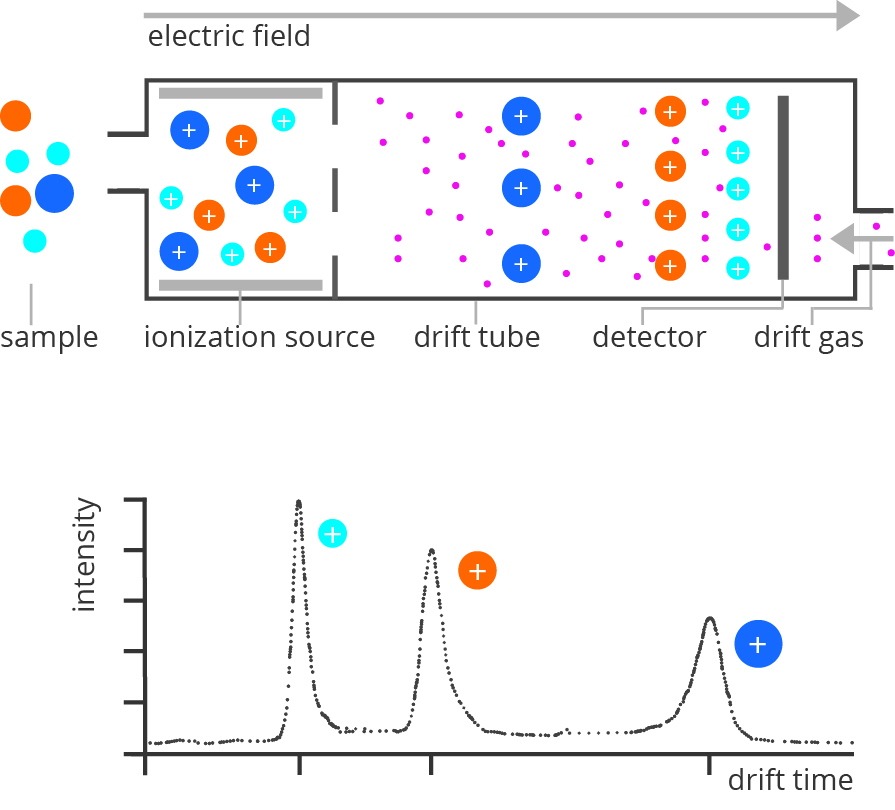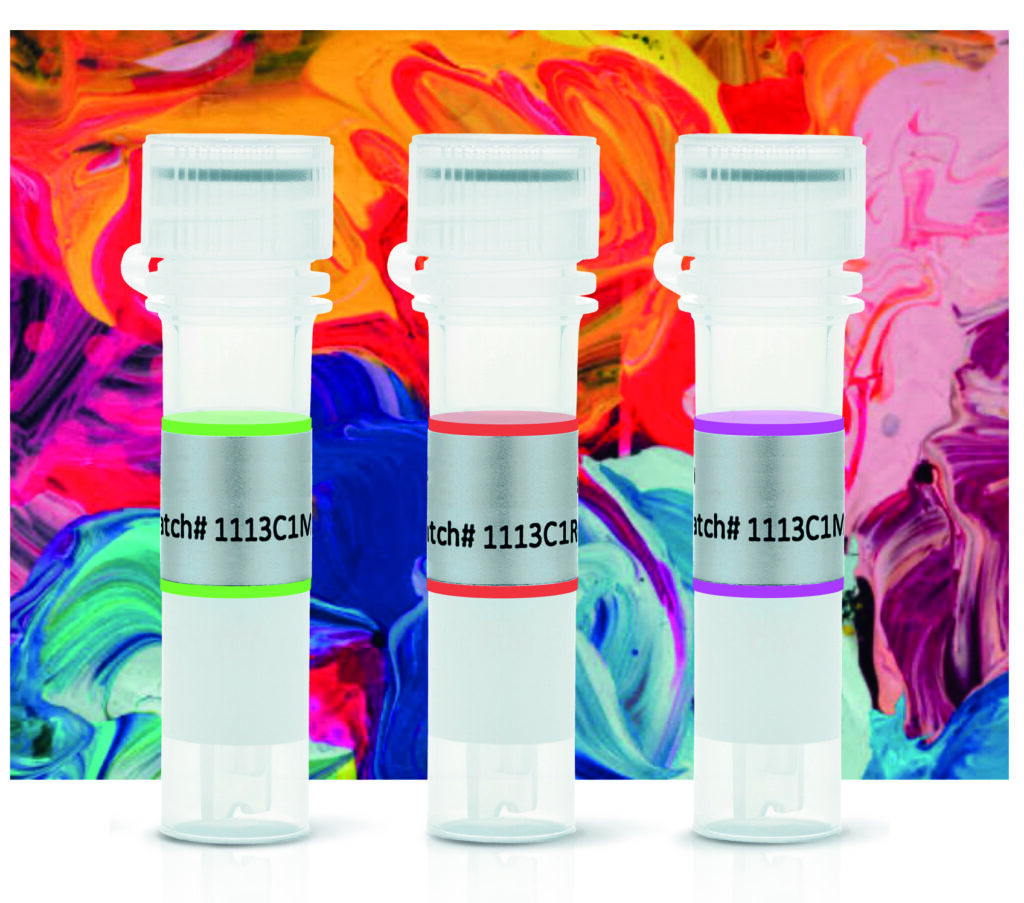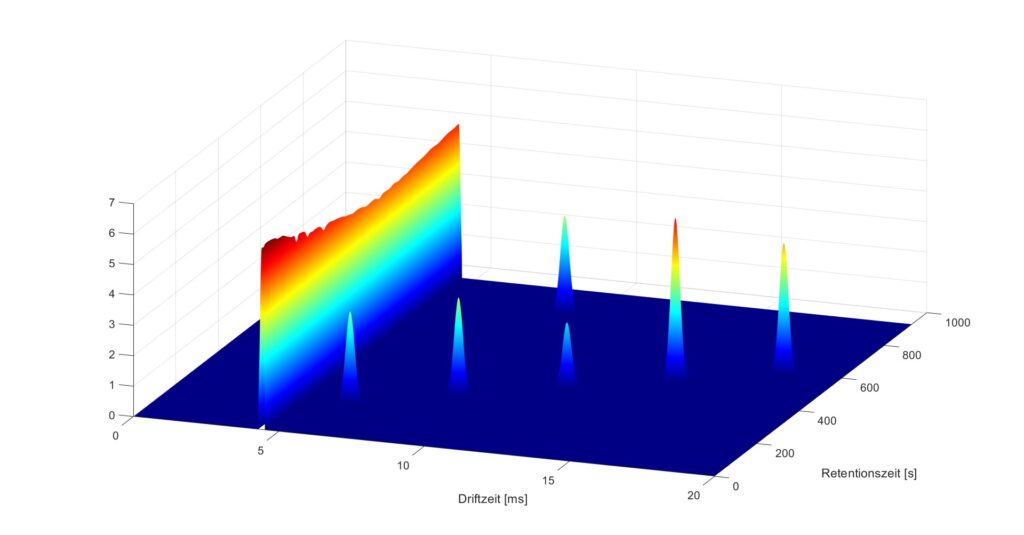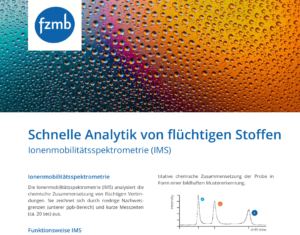Rapid analysis for volatile substances
Volatile organic substances (volatile organic compounds) in a material are converted into the gas phase by heating. First, these gaseous substances are ionized. The ions then move through an electric field in a drift tube filled with gas.
The larger the ions in the sample, the more frequently they collide with the gas molecules in the drift tube. Each collision is accompanied by a delay in the ion’s “travel time (drift time)” through the tube.
After passing through the drift tube, a detector determines the drift time of the ions. The longer the drift time, the greater the molecular weight of an ion.

Analysis of complex samples

For the analysis of samples consisting of a mixture of organic compounds, a sample pre-separation is first carried out using gas chromatography (GC). The device configuration established at the fzmb allows the analysis of light to medium volatile compounds up to a boiling point of 120 C°.
The range of substances that can be analyzed includes organic compounds such as hydrocarbons, aldehydes, ketones, alcohols, esters and amines.
Range of services and areas of application
Range of services
- Fingerprint analysis: Comparative analysis of two samples
- Identification of differentially expressed substances
- Identification of unknown substances
- Quantitative analysis of substances


Areas of application
- Impurities in plastics
- Microbiology/diagnosis of infections
- Ingredients in animal tissues
PDF Ion Mobility Spectrometry

Contact
Florian Meuche
Department Manager Equipment Development

phone +49 3603 – 833 194